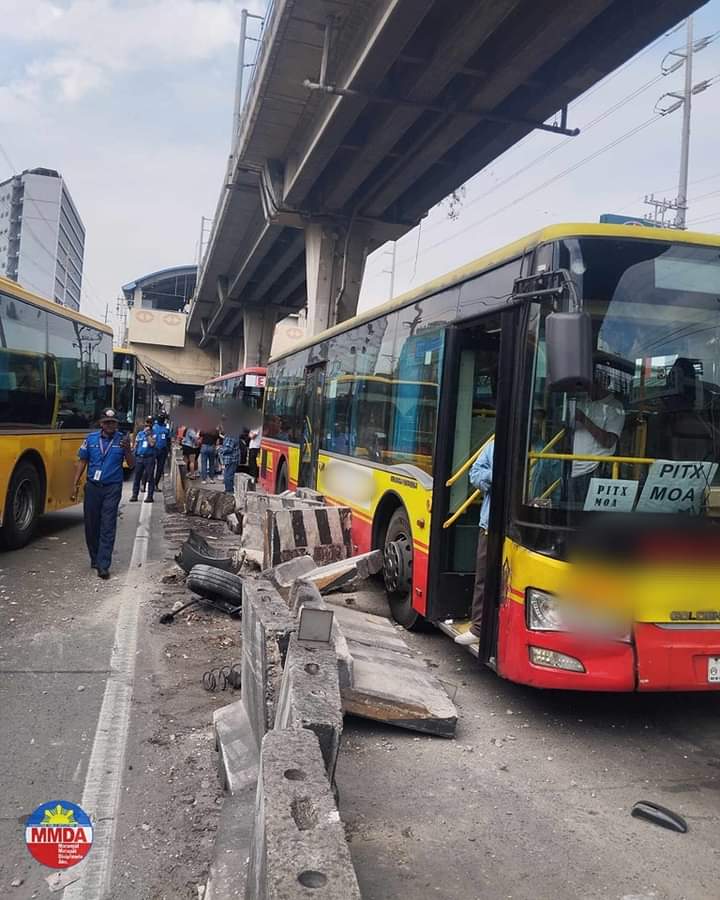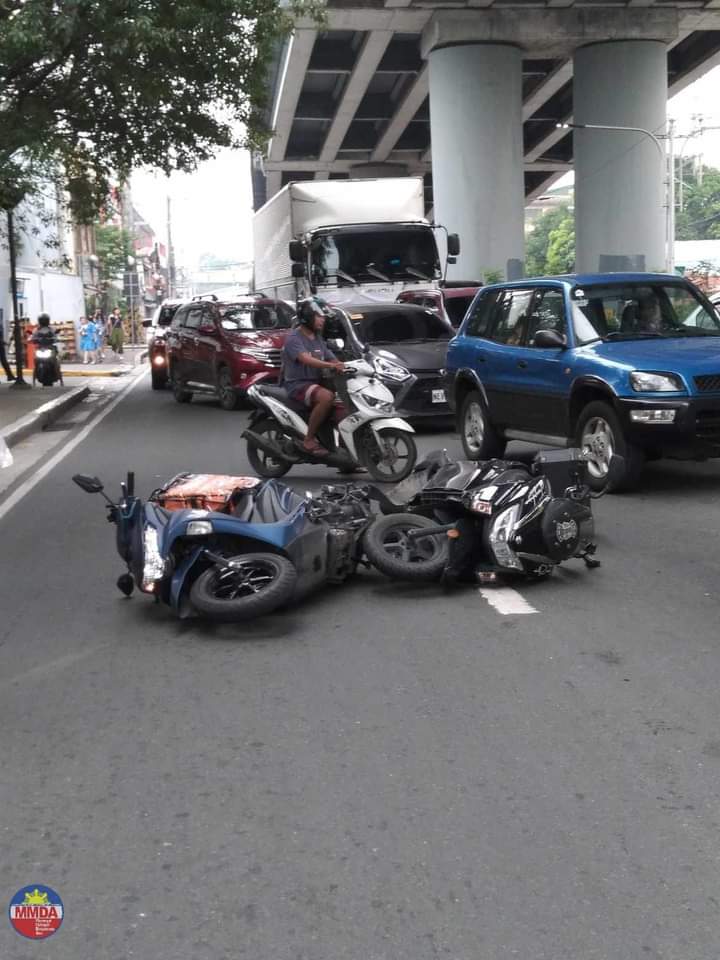Knowing where to report a road accident or a traffic incident can help. It ensures timely help and proper handling of the situation. The roads are bustling and cities are often congested. Accidents and life-and-death incidents happen a lot. They need quick action. Knowing the right authorities to contact is key. These include the Land Transportation Office (LTO), the Land Transportation and Franchising Regulatory Board (LTFRB) and the Metro Manila Development Authority (MMDA). It helps drivers and road users, especially in an emergency.
Also, reporting incidents on time helps traffic flow. It lets authorities investigate to find the cause and prevent future incidents. By reporting to the right agencies, you can help promote road safety. You can also ensure a faster response to emergencies. Knowing where to report a road accident or a traffic incident helps those involved. It also helps other affected road users.
Recognizing Road Accidents and Traffic Incidents
In the topic of road accidents and traffic incidents, knowing the difference is vital. It is key for reporting and proper response. A road accident usually involves unintentional events resulting in damage, injury, or harm. For example, a collision between two vehicles causes injuries. This is to the drivers and passengers. Or, a vehicle crashing into a roadside barrier causes property damage. These events are road accidents.

But, a traffic incident is an unintentional event on the road. It may not cause damage, harm, or injury. This could include situations such as a vehicle breakdown, a minor fender bender with no injuries, and debris obstructing a lane. These incidents may disrupt traffic or pose hazards. But, they often do not cause much harm or damage. To tell the difference between accidents and incidents helps authorities make better choices. It lets them put resources where they are most needed to manage road safety well.

Where to Report a Road Accident or a Traffic Incident
Reporting a road accident or incident can be facilitated through various departments with jurisdiction over the location. Additionally, it’s essential to consider the nature of the accident or incident before proceeding with the report. Taking these factors into account ensures proper handling and resolution of the situation.
1. MMDA (Metropolitan Manila Development Authority)
The MMDA handles road accidents and incidents limited to within the Metro Manila area.
What it covers:
- Accidents
- Incident resulting from traffic violations
- Road obstructions
- Other road incidents in Metro Manila
Hotline information:
- MMDA Hotline: 136
- Trunk line: (+632) 8882-4151 to 77
- Local 337: Rescue
- Local 1096: Metrobase
- Local 1135: Road Safety
- Local 1168: Public Safety
- Local 1169: Road Emergency
2. LTO (Land Transportation Office)
The LTO oversees vehicle registration, licensing, and road safety regulations nationwide.
What it covers:
- Accidents involving vehicles registered with the LTO
- Issues related to driver’s licenses.
Hotline information:
- LTO hotline: (02) 8922-9061 to 63
- LTO Text hotline: Text LTOHELP to 2600 (All networks)
3. PNP (Philippine National Police)
The PNP is responsible for maintaining peace and order, including handling road accidents and incidents.
What it covers:
- Vehicular incidents
- Accidents
- Traffic violations
- Criminal activities
Hotline information:
- PNP emergency hotline number 117 or (+632) 8722-0650
- Text hotline: 0917-847-5757
- Local police stations
4. PNP-HPG (Philippine National Police-Highway Patrol Group)
The PNP-HPG specializes in enforcing traffic laws and regulations on highways and major roads.
What it covers:
- Road accidents
- Traffic incidents
- Enforcing road safety measures.
Hotline information:
- PNP-HPG hotline: 0926-CALLHPG (0926-2255474)
5. Roadside Assistance from Insurance Companies
Many insurance companies offer roadside assistance as part of their coverage, providing help in case of accidents, breakdowns, or other emergencies while on the road.
What it covers:
- Towing
- Fuel delivery
- Flat tire assistance
- Minor repairs
Hotline information:
- Contact your insurance provider directly for their roadside assistance hotline number, which is usually available 24/7 for immediate assistance.
6. LTFRB (Land Transportation Franchising and Regulatory Board)
The LTFRB is responsible for regulating all public land transportation services in the country, including taxis, buses, jeepneys, and transport network vehicle services (TNVS).
What it covers:
- PUV complaints
- PUV violations
- accidents involving public utility vehicles (PUVs)
Hotline information:
- LTFRB hotline: (02) 1342
7. LGUs (Local Government Units)
The LGUs are responsible for implementing local laws and regulations, including those related to traffic management and road safety within their respective jurisdictions.
What it covers:
- Local traffic-related concerns
- Accidents
- Road repairs
- Traffic flow management
Hotline information:
- City or municipal hall for the local Traffic Management Office (TMO)
- Local emergency hotline number for assistance in reporting traffic incidents or accidents.
8. BFP (Bureau of Fire Protection)
The BFP is responsible for fire prevention, suppression, and emergency response services nationwide.
What it covers:
- Accidents resulting in fires
- Accidents requiring emergency rescue operations
Hotline information:
- BFP emergency hotline number: 911
9. Red Cross (Philippine Red Cross)
The Philippine Red Cross (PRC) is a humanitarian organization dedicated to providing emergency response and disaster relief services across the Philippines.
What it covers:
In cases where accidents result in injuries or require medical assistance, the Red Cross may be involved in:
- Providing first aid
- Offering ambulance services
- Offering other forms of medical support
Hotline information:
- Emergency Hotline Number 143 or (+632) 8527-8385
- National Medical Emergency Hotline: 112
10. Expressway Hotlines
Expressway hotlines are dedicated contact numbers provided by expressway operators for reporting accidents, incidents, and emergencies on their respective expressways. These hotlines ensure swift response and assistance in times of need for motorists traveling on expressways.
What it covers:
- Accidents
- Breakdowns
- Road obstructions
- Hazardous conditions
- Any other emergencies that may occur on the expressway
Hotline information:
- North Luzon Expressway (NLEX): 1-35000
- Subic-Clark-Tarlac Expressway: 1-35000
- Tarlac–Pangasinan–La Union Expressway (TPLEX): (+63917) 888-0715
- South Luzon Expressway (SLEX): (+63917) 687-7539 / (+6349) 508-7539
- Skyway: (+63917) 539-8762 / (+632) 5318-8655
- Muntinlupa-Cavite Expressway (MCX): (+632) 7795-1629
- STAR Tollway: (+63917) 511-7827 / (+6343) 756-7870
- Manila-Cavite Expressway (CAVITEX): 1-35000
- Cavite-Laguna Expressway (CALAX): 1-35000
- C5 Link Expressway: 1-35000
- Cebu–Cordova Link Expressway (CCLEX): 1-35000
These agencies and departments play crucial roles in ensuring public safety and managing traffic incidents and accidents throughout the country.
Video: Road Accidents in the Philippines
For more information on the importance of reporting road accidents or traffic incidents to the appropriate authorities for each, then here’s a video from ANC 24/7 that you can watch:
Summary
Knowing where to report a road accident or traffic incident is important to ensure timely assistance and proper handling of the situation, especially in densely populated urban areas where accidents are common. Prompt reporting not only facilitates smoother traffic flow but also enables authorities to conduct necessary investigations and prevent future occurrences. By familiarizing yourself with the appropriate authorities to contact, you can contribute to promoting road safety and ensuring a more efficient response to emergencies, making a difference in safeguarding lives and maintaining order on the roads.